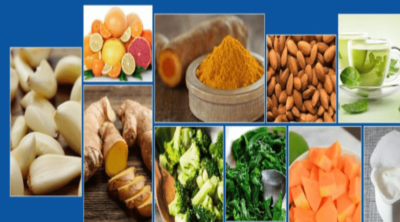
Low residue diet is a special kind of diet as it is not recommended for general reasons. Know what foods are included in this diet from the following article.
People who have had abdominal surgery or are suffering from certain digestive conditions like diverticulitis or inflammatory bowel disease (IBD), are the ones who are recommended to follow a low residue diet. High residue foods are ones which contain high amounts of the undigested parts of plants. These substances are not easily digested by the body and therefore they cause the digestive system to work harder thus, increase the burden on the bowels.
So, when intake of such substances are limited, the size and number of stools are reduced. This in turn, aids in providing relief to the digestive system post surgery and help in managing the symptoms of medical conditions such as the ones mentioned above. This kind of diet also soothes symptoms such as abdominal pain and diarrhea, which are usually the result or let’s say, manifestation of medical conditions like IBD. In short, the main aim behind a low residue diet is to help the intestines rest.
Low Residue Food
- Alfalfa sprouts
- Applesauce
- Apricots
- Arrowroot cookies
- Bagels
- Banana
- Beans (green/yellow)
- Beets
- Broth-based soups
- Buns
- Butter
- Canned fruit cocktail
- Cantaloupe
- Carrots
- Celery
- Chips
- Clear jellies
- Crackers
- Cucumber
- Eggs
- English muffins
- Fish
- Ground meat
- Honeydew melon
- Jelly
- Lettuce
- Margarine
- Mayonnaise
- Mushrooms
- Noodles
- Oil
- Peaches
- Peanut butter (smooth)
- Peppers (green/red)
- Plain bouillon and broth
- Plain cereals
- Plain chocolate
- Plain melba toast
- Potatoes
- Pretzels
- Refined breads
- Pasta
- Salad dressings
- Squash
- Sweet or white potatoes without skins
- Syrup
- Tender meat
- Tofu
- Vegetable juices (without seed or pulp)
- Waffles
- Watermelon
- White bread
- White rice
- Yogurt
- Zucchini
Besides the above items, people can also go for milk, buttermilk, ice cream, cheese, sour cream, pudding,and casseroles. However, such items should be eaten in small to moderate quantity, and must be avoided if they should cause any bowel problems or allergic reactions. Apart from knowing about the low residue foods, it is also an added advantage if you are also aware of foods that are high in residue, so that they can be avoided.
Foods To Avoid in A Low Reside Diet
- Berries
- Broccoli
- Bran
- Brussels sprouts
- Cabbage
- Cauliflower
- Coconut
- Corn bread
- Dried fruit
- Granola
- Kale
- Kasha
- Marmalade
- Peanut butter
- Prune juice
- Raisins
- Seeds and nuts
- Swiss chard
- Tough or coarse meats
- Vegetable sauces
- Wheat germ
- Whole fruits
- Whole grains
- Whole vegetables
Low Residue Recipes
# 1. To start with the day, get yourself one-half cup cereal with milk. Add about 8 oz. of fresh pulp-less fruit juice. As a snack, enjoy 2 slices of refined white bread, with honey. Add about 8 oz. of vegetable juice.
# 2. Then follows lunch. Here you can treat yourself with foods mentioned in the low residue food list such as, white rice (one-half cup), broiled fish (3 oz.) and fruit juice (8 oz. without pulp).
# 3. For the next snack, you can try a cup of yogurt and 8 oz. of vegetable juice. And finally, dinner time may include broth-based soup, broiled chicken (3 oz.), fruit juice (8 oz.) and low-fiber pasta (1 cup). Butter can also be added.
It is obvious to understand that a diet such as low residue one is not enough to provide all the nutrients essential for overall health of the body. This is the reason it must not be followed for a longer period. And if you should stay on this diet for medical reasons, you must consult your health care provider about how can you ensure that your body’s nutritional requirements are met sufficiently through other alternatives. Supplements could be an obvious choice, but it is safer to discuss their use with a medical expert. Take care!
